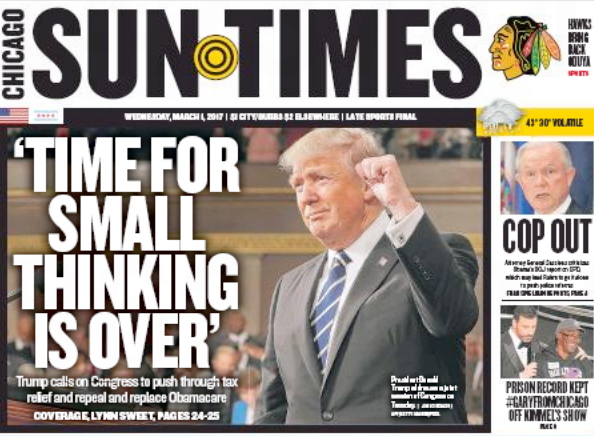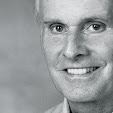Thanks, President Trump, but No Thanks. Chicago Can Solve Violence without Your Help.
(Updated July 30) Last January President Trump boasted that if Chicago’s leaders can’t solve the city’s violence, “we’re going to solve the problem for them.”
So far the president has sent in 20 ATF agents to work with Chicago police. And he’s claimed to have spoken last year with a “mystery cop” who told him he could solve Chicago’s violence in a “couple of days”.
That’s big thinking? Let’s get real.
In the six months since the president’s boast, Chicago’s violence has continued unchecked, with over 100 people shot here, 14 fatally, on the fourth of July weekend alone.
And
for decades Chicago has lived with violence on a war-time scale.
Twenty-five years ago Mayor Richard M. Daley gave an honest assessment: “Chicago has lost two generations of young people to gangs and drugs.”
Today,
the total is three generations lost. And counting fast to four, with no
measurable progress ever made towards reducing violence in all this
time.
Pressure’s
on. Chicago is the national poster child for violence. Violence is
crippling its economy, scaring away new creators and forcing
violence-weary Chicagoans to flee the city.
Yet
since the 1960's no one in Chicago, including Mayor Emanuel, the city’s current take-charge,
can-do mayor, has ever come up with a plan to solve violence here.
So what can Chicago do? Plenty!
To
step back and look objectively at Chicago is to realize that it has
never even attempted to put to good use its two most powerful violence
reduction resources.
The
first is Chicago’s people. It’s their wisdom, their experience, their
intelligence, their courage and their yearning for safe streets. It’s
their love of family, of neighborhoods and of Sweet Home Chicago.
The
second, in our media-driven society, is Chicago’s all-powerful media:
its radio and TV stations, its two daily newspapers, its magazines and
community newspapers, and its massive Internet resources.
When Chicago sees fit to combine these two key resources — when its media are helping its people solve violence instead of scaring them about it — Chicago’s power to solve violence becomes unstoppable.
This
power will become unstoppable in prime-time public forums that give all
Chicagoans (the city’s leaders included) an informed voice in making
Chicago a safe place to live, work, visit and raise a family in.
It will become unstoppable in public forums that make Chicagoans and City Hall responsive and accountable to each other in the search to end violence.
And
it will become profitable for media that successfully tap the largest
of all large markets: the Market of the Whole of all Chicagoans and all
residents of the Chicagoland region as well, since violence in Chicago
bleeds heavily to its suburbs as well.
When you think about it, virtually any
media format can facilitate the search to end violence. Here’s one that
taps the enormous vote-generating power of voter-driven Reality TV:
It’s Chicago FIXIT,
a locally produced, weekly, 60-minute prime-time show modeled on
Reality TV talent contests like The Voice. And here’s the thing: FIXIT
is governed by rules and rewards designed to bring out the best in
Chicagoans, not the worst, as so often happens in media.
FIXIT
rules are enforced by mechanisms — referees, instant replay and expert
commentary — that give it the same respect and trust that sports fans
give to telecasts of college and pro sports contests.
FIXIT
appears on your TV or device screen with all the bells and whistles of a
well-produced reality TV show. It’s moderated by a charismatic,
judicious, well-informed, straight-talking host.
FIXIT
begins by inviting all Chicagoans to participate in an eight-month
search for solutions for best ways — large and small, local and
citywide — to make Chicago safe.
It’s structured, NCAA March Madness style, as a tournament with four two-month phases.
Phase
I is a citywide talent search to select 32 talented four-member teams
of problem-solvers: a researcher, a spokesman, a film maker and an idea
person.
Team
members can be any mix of policy makers, academics, attorneys, retired
judges, businessmen, social workers, community leaders, ex-offenders,
gang members and especially the young people who are the primary the
victims and perpetrators of violence.
Each
team develops its own solution to any or all of the well-known aspects
of violence: gun violence, gang membership, drug use and dealing,
racism, joblessness, substandard schools, poverty and police/community
relations.
Phase
II pits 32 selected teams in an elimination contest leading to Phase
III, a Sweet 16 round that leads to Phase IV: an Elite Eight search for a
Best Team and a Best Solution to be submitted to City Hall on a
strictly advisory, non-binding basis.
Solutions
developed during these four phases are subjected to constant, rigorous
vetting by panels of citizens, experts and public officials.
Teams are evaluated and rewarded on the basis of their ability to cooperate as well as compete with each other. Cooperate?
Absolutely, because FIXIT rules reward teams that listen to and learn
from each other — and everyone (including gang members) involved in
violence.
Now
imagine all Chicago media discussing, reporting on and participating in
this historic FIXIT search, much as they do with Chicago’s sports
teams. Here’s an overview of FIXIT features:
1. Excitement and Outcomes.
FIXIT is a rule-governed, action-packed, solution-generating battle of
ideas. With it, any city can examine any problem from all angles and
devise any number of solutions that earn both public and political
support. FIXIT stands or falls on its ability to produce demonstrable,
tangible results that earn public respect and trust.
2. Rules and Limited Clout.
As in TV sports broadcasts, instant replay verifies FIXIT rule
infractions such as false allegations, dishonesty and poor listening.
Fact-checking is instant. Although a FIXIT point-scoring system rates
teams and solutions alike, winning solutions are decided by weekly votes
of the viewing audience.
3. Inclusiveness and Communication. FIXIT
taps deep into the knowledge of policy makers and citizens of all ages
and backgrounds. It gets citizens thinking and working together. It
serves as a training ground for the next generation of political
leaders. It strengthens the public mind.
4. Safety and Purpose.
To protect participants and the public, FIXIT programs are taped and
edited for delayed broadcast. Even when participants expose instances of
public corruption, FIXIT rules keep the show focused on its mission,
which is to find solutions, not find fault.
5. Celebrations and Pride. Fully
realized, FIXIT generates audiences comparable to those that watch
sports telecasts. Chicagoans respect FIXIT and take pride in it. And
they celebrate FIXIT victories as they celebrate their winning sports
teams.
By
tapping deep into the strengths of Chicago’s people, FIXIT empowers
Mayor Emanuel to tell President Trump that Chicago, on its own, is
addressing violence in profoundly constructive ways that can readily be
replicated in other cities.
Steve Sewall, Ph.D., is a Chicago educator and media entrepreneur. Chicago FIXIT is a localized version of America’s Choice, his 2006 treatment for politically themed reality TV. See also ChicagoCivicMedia.com.


